The most popular varieties of yellow clematis
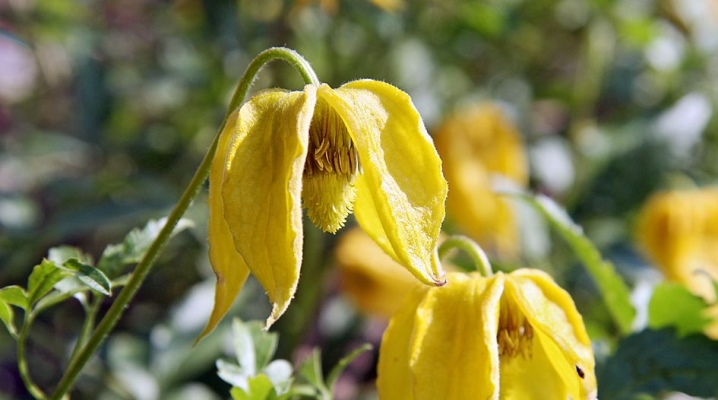
With the arrival of warmth, beautiful bright flowers bloom in the garden plots. Some of the most popular are clematis. This plant is represented by climbing and shrub forms. Yellow clematis have a special charm.
Characteristic
An unusual climbing plant belongs to the Buttercup family. The name of the beautiful flower comes from the Greek word "klema", but many Russian gardeners call it clematis. For each garden plot, you will be able to choose your own type of clematis: whether it is a small shrub with bell-shaped inflorescences or a tall vine with juicy yellow buds. In any case, any variety of clematis will become the undisputed favorite among ornamental plants.
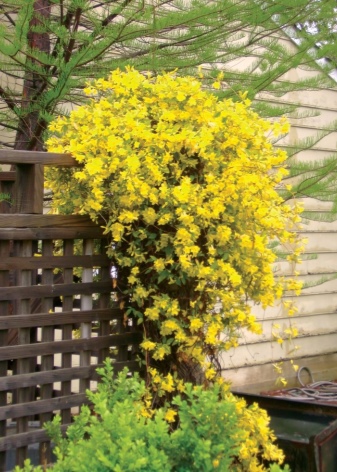

Vines twine around the support with leaf stalks, creating an amazing color composition: snow-white, pink or yellow flowers bloom against the background of dark green foliage. The root system of the plant is divided into pivotal and fibrous. Experienced gardeners distinguish large-flowered, medium-flowered and small-flowered clematis. Various types of plants are used for:
- landscaping of gazebos and terraces;
- growing in open garden plots;
- decoration of fences.
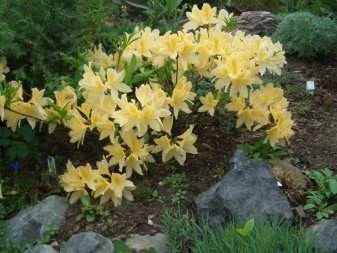

Peculiarities
The most popular among yellow clematis is Tangut. This is a short perennial plant, whose height in the wild does not exceed 30 cm. Also, this variety can be in the form of vines. Its main feature is the bell-shaped buds that lean towards the ground. Beautiful inflorescences of ripe lemon color exude a pleasant fresh aroma. The leaves of the plant are colored dark green and are rarely found on the stem.
The flowering period of clematis Tangut falls on the end of May. With proper care, the flower pleases gardeners with its beauty until mid-autumn. This variety blooms 2 times a year.
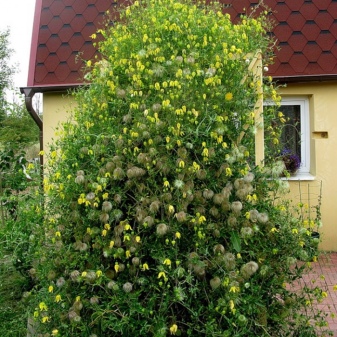
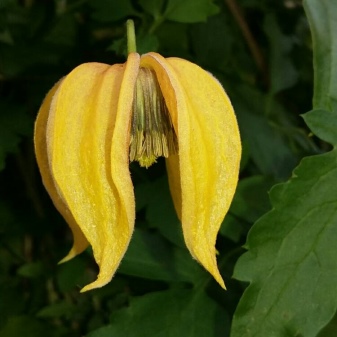
Experts say that in regions with unfavorable weather conditions, Tangut clematis, without giving a second flowering, still pleases gardeners with its appearance. This is due to the fact that the plant is decorated with silvery seedlings. They are used by florists when drawing up dry compositions. In addition, inflorescences of "sunny" shades are found among the following varieties.
- "Yellow Queen". The variety belongs to the large-flowered varieties. It is a vine that clings to the support with the roots of the leaves. Clematis with a beautiful name is known for its original color: a large bud of a pale yellow color with a silvery sheen will adorn any site. This color is a rare occurrence for large-flowered clematis. In addition to open areas, "Yellow Queen" grows well in containers and is able to fill any room with bright colors.
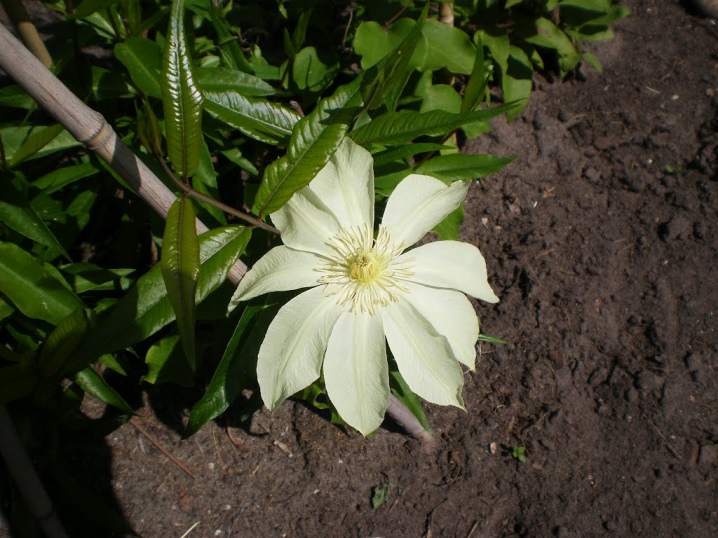
- Bill McKenzie. Outwardly, the variety resembles small trees with elongated branches. Differs in rapid growth. The inflorescences have a yellow tint with a golden tint. Outwardly, the buds resemble drooping bells. Ideal for small garden areas. The variety is unpretentious. A beautiful plant can grow on any soil. However, the location for Bill McKenzie should be calm and sunny.
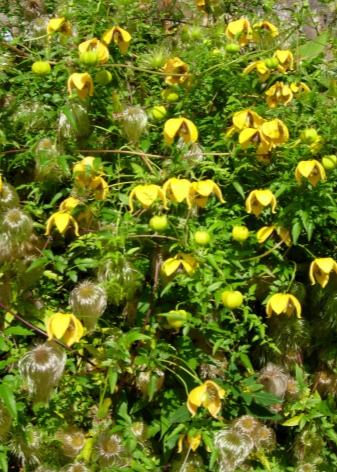
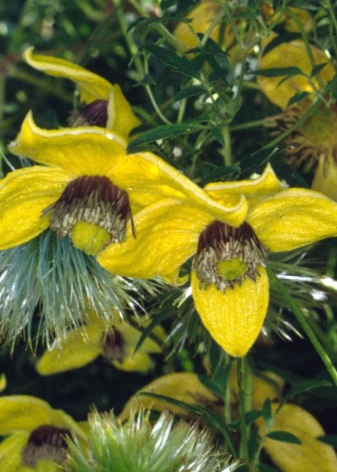
- "Radar of love". This variety can be described as a shrub culture with shoots up to 3 meters long. "Radar of love" is a type of Tangut clematis and is widely used to decorate terraces, gazebos and balconies.There is a legend that this variety "reacts" to love and turns its buds towards a couple in love.
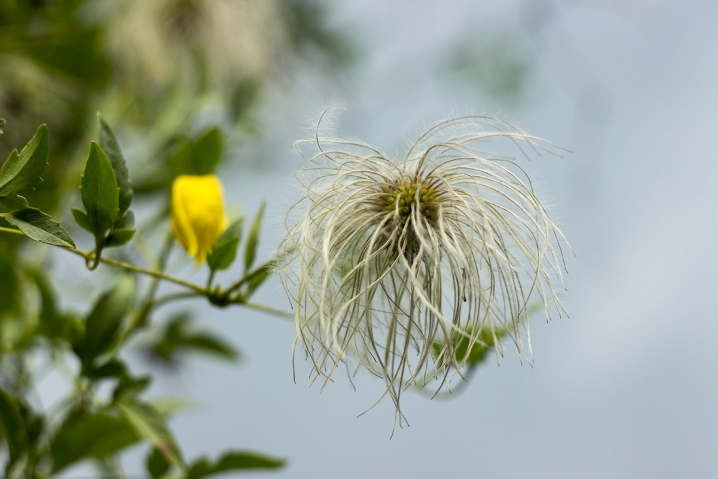
- "My angel". This type of yellow clematis is a herbaceous perennial that pleases with its beauty until the first frost. The buds have a unique color: the inner side of the petals is painted in a rich yellow tone, and the outside of the bud has a purple hue. The variety does not require careful maintenance and does not need shelter in winter.
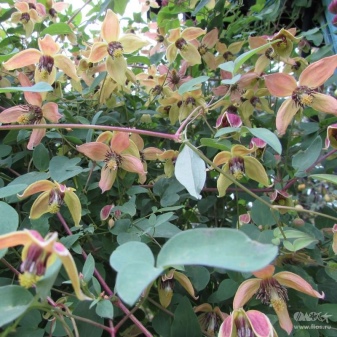

- Golden Tiara. The inflorescences look like graceful bells, and visually resemble a crown during the flowering period. This variety instantly reacts to excess moisture or, conversely, suffers from drought. The Golden Tiara blooms from June to October.
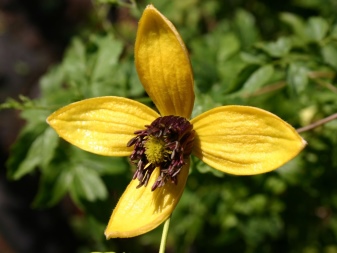
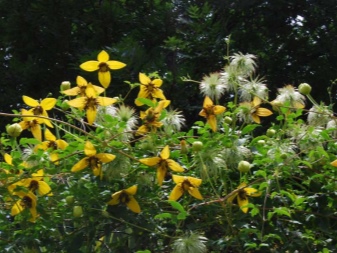
Care
The easiest way to grow yellow clematis is to purchase seedlings from a proven nursery. When buying, pay attention to the following nuances.
- The root system of the plant should consist of 2-3 formed roots (at least 10 cm long).
- The appearance of the seedling should be healthy and blooming. It is better to refuse weak and drooping plants.
Before planting yellow clematis, it is important to determine the location. It is advisable that the graceful flowers are not exposed to direct sunlight around the clock. They will need protection from the bright midday sun. An excellent option would be to plant small trees or shrubs next to clematis. It is also undesirable for clematis to have drafts: the plant will hurt, and its development will stop abruptly.
The root system of yellow clematis does not tolerate excess moisture well, therefore the close proximity of groundwater is prohibited.
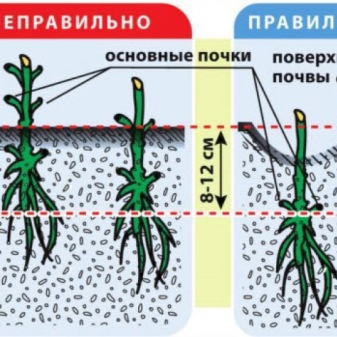
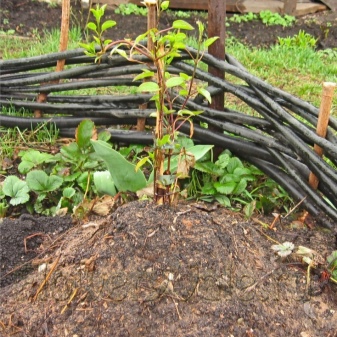
Prepare for planting yellow clematis in advance. Dig a hole with a depth of at least 60 cm, on the bottom of which a layer of drainage is laid out (broken brick, crushed stone or gravel). In addition, a special support is installed at the bottom of the hole, which will support the plant during the growth process. The drainage layer is covered with soil and the seedling is placed, gently straightening the root system. In this case, the root collar should be deepened by 7-10 cm.
Water beautiful flowers 1-2 times a week. The soil must be loosened and cleaned of weeds. Also, do not forget about mulching the soil with dry foliage, peat and sawdust. Clematis need feeding. During the appearance of buds, it is advisable to apply complex mineral fertilizers. After the plant has faded, it needs phosphorus fertilization.
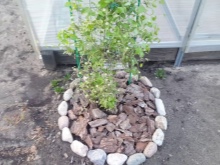
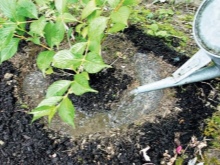
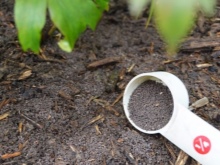
All clematis care serkets are disclosed in the following video.







































































































Thanks for the information. I have 12 varieties of clematis. I love them!
The comment was sent successfully.